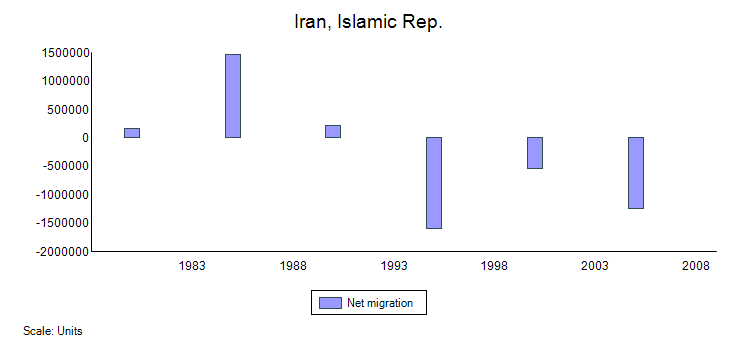|
Collection Of Daily Memos Of Hashemi Rafsanjani
''Collection of daily memories of Hashemi Rafsanjani'' (Persian: مجموعه خاطرات روزانه اکبر هاشمی رفسنجانی) is a collection of diaries written by late Iranian politician Akbar Hashemi Rafsanjani. Part of his diary is not published due to security reasons. Volumes Hashemi’s memoirs begin in March 1981, therefore omitting the first two years after the Islamic Revolution of 1979. So far, 8 books of Hashemi’s memories, covering from March 1981 until 1989 have been published: * ''Weathering the Crisis'' (March 1981-March 1982) * ''After the Crisis'' (March 1982-March 1983) * ''Stability and Challenge'' (March 1983-March 1984) * ''Towards Destiny'' (March 1984-March 1985) * ''Defense'' (1986) * ''Defense and Politics'' (1987) * ''End of Defense, beginning of reconstruction'' (1988) * ''Reconstruction'' (1989) References See also * The official History of the Islamic republic of Iran History books about Iran Books by Akbar Hashemi Raf ... [...More Info...] [...Related Items...] OR: [Wikipedia] [Google] [Baidu] |
Akbar Hashemi Rafsanjani
Akbar Hashemi Rafsanjani ( fa, اکبر هاشمی رفسنجانی, Akbar Hāshemī Rafsanjānī, born Akbar Hashemi Bahramani, 25 August 1934 – 8 January 2017) was an Iranian politician, writer, and one of the founding fathers of the Islamic Republic who was the fourth president of Iran from 1989 to 1997. He was the head of the Assembly of Experts from 2007 until 2011 when he decided not to nominate himself for the post. He was also the chairman of the Expediency Discernment Council. During his 40-year tenure, Rafsanjani amassed a large amount of power serving as the speaker of parliament, Commander-in-Chief during the Iran–Iraq War, President, and chose Ali Khamenei as the supreme leader of Iran. His powerful role and control over Iranian politics earned him the name "Akbar Shah". Rafsanjani became president of Iran after winning the 1989 election. He served another term by winning the election in 1993. In the 2005 election he ran for a third term in office, placin ... [...More Info...] [...Related Items...] OR: [Wikipedia] [Google] [Baidu] |
1979 Iranian Revolution
The Iranian Revolution ( fa, انقلاب ایران, Enqelâb-e Irân, ), also known as the Islamic Revolution ( fa, انقلاب اسلامی, Enqelâb-e Eslâmī), was a series of events that culminated in the overthrow of the Pahlavi dynasty under Shah Mohammad Reza Pahlavi, and the replacement of his government with an Islamic republic under the rule of Ayatollah Ruhollah Khomeini, a leader of one of the factions in the revolt. The revolution was supported by various leftist and Islamist organizations. After the 1953 Iranian coup d'état, Pahlavi had aligned with the United States and the Western Bloc to rule more firmly as an authoritarian monarch. He relied heavily on support from the United States to hold on to power which he held for a further 26 years. This led to the 1963 White Revolution and the arrest and exile of Ayatollah Khomeini in 1964. Amidst massive tensions between Khomeini and the Shah, demonstrations began in October 1977, developing into a campaign of c ... [...More Info...] [...Related Items...] OR: [Wikipedia] [Google] [Baidu] |
History Of The Islamic Republic Of Iran
One of the most dramatic changes in government in Iran's history was seen with the 1979 Iranian Revolution where Shah Mohammad Reza Pahlavi was overthrown and replaced by Ayatollah Ruhollah Khomeini. The authoritarian monarchy was replaced by a long-lasting Shiite Islamic totalitarian Islamic republic based on the principle of rule by Islamic jurists, (or "''Velayat-e faqih''"), where Shiite jurists serve as head of state and in many powerful governmental roles. A pro-Western, pro-American foreign policy was exchanged for one of " neither east nor west", said to rest on the three "pillars" of mandatory veil (''hijab'') for women, and opposition to the United States and Israel. A rapidly modernizing capitalist economy was replaced by a populist and Islamic economy and culture. The leader of the revolution and founder of the Islamic Republic, Ayatollah Ruhollah Khomeini, was the Supreme Leader of Iran until his death in 1989. He was followed by Ali Khamenei. General trends Du ... [...More Info...] [...Related Items...] OR: [Wikipedia] [Google] [Baidu] |
History Books About Iran
History (derived ) is the systematic study and the documentation of the human activity. The time period of event before the invention of writing systems is considered prehistory. "History" is an umbrella term comprising past events as well as the memory, discovery, collection, organization, presentation, and interpretation of these events. Historians seek knowledge of the past using historical sources such as written documents, oral accounts, art and material artifacts, and ecological markers. History is not complete and still has debatable mysteries. History is also an academic discipline which uses narrative to describe, examine, question, and analyze past events, and investigate their patterns of cause and effect. Historians often debate which narrative best explains an event, as well as the significance of different causes and effects. Historians also debate the nature of history as an end in itself, as well as its usefulness to give perspective on the problems of the p ... [...More Info...] [...Related Items...] OR: [Wikipedia] [Google] [Baidu] |



.jpg)